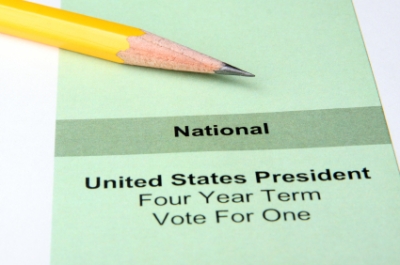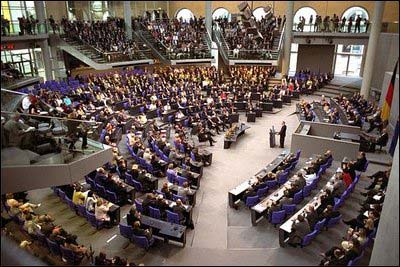
A quick guide to voting

With US election week upon us, we thought you might appreciate a look at alternatives to the first-past-the-post system used to elect the US President and Congress, as well as the UK government, and others around the world, including the Indian and Canadian governments. First-past-the-post is pretty much the simplest system imaginable: everyone casts one vote, and the candidate with most votes gets a place in the Electoral College, the House of Representatives, or whichever body is being elected.
An advantage of this system is that no-one could possibly fail to understand it, however its drawbacks are well known: large swathes of the electorate can, and do, remain unrepresented, and the election boils down to a two horse race with rampant negative campaigning and policy often falling victim to personality. Some countries, for example France in its presidential and National Assembly elections, run a slightly more sophisticated variation on the first-past-the-post system, with a second round allowing a runoff between the two most popular candidates. But either way, third-ranked parties don't get a foot in the door.
The most commonly used alternative to the winner-takes-all approach to voting a government is proportional representation, as used by almost all EU countries. If a party gets x per cent of the popular vote, then it should get x per cent of the seats in the body that is being voted for, which usually goes on to choose the head of government. However, percentages are unlikely to translate neatly into whole numbers of seats, so how exactly should the proportions be worked out?
This is indeed a subtle question and different countries solve it in different ways. One method, which is used, for example, in Germany and Cyprus, is known as the largest remainder method. It starts off by deciding a quota, which gives the number of votes a party should have to qualify for one seat. The most obvious (but not the only) way to do this is to divide the total number of votes by the total number of seats: if there are 500,000 votes and 50 seats, then a party needs 10,000 votes to get a seat. Next, the total number of votes for each party is divided by the quota, to see how many seats the party has earned: if party A gets 33,000 votes, then 33,000/10,000 = 3.3, so the party pockets 3 seats and is credited with a remainder of 0.3. After seats have been allocated in this way to each party, a certain number y of seats will remain, and these are allocated one each to the y parties with the largest remainders.
Seems simple and fair, but, as with most voting mechanisms, strange things can occur. Notably, this systems suffers from the Alabama paradox: if you decide after the election to add extra seats, and then re-allocate the seats using the same method, you may find that individual parties lose out and actually gain fewer seats than they would have done before.
Another system of allocating seats proportionally is to give them out one by one, keeping track of the seat-to-vote ratio as you go along. The d'Hondt method, used for the Spanish Congress of Deputies and the Dutch States-General among many others, is an example. The first seat goes to the party with most votes. Then, for each party, divide the total number $v$ of votes it received by the total number $s$ of seats it already has plus 1. This gives the quotient $$\frac{v}{s+1}.$$ The next seat goes to the party for which this quotient is highest, and the process is repeated until all seats have been allocated.
In both these methods voters essentially vote for party lists, rather than individual candidates. The Republic of Ireland, Australia, and others use a very different system for achieving proportional representation: single transferable voting. Here voters rank candidates in order of preference. Before counting begins a quota is set which determines the minimum number of votes a candidate must achieve to gain a seat. There are different ways of determining the quota; one commonly used is the Droop quota defined as $$\left(\frac{V}{S+1}\right) +1,$$ where $V$ is the total number of votes and $S$ the total number of seats. In the first round each candidate who has reached or exceeded the quota gets a seat. If no-one meets the quota, (which is usually the case in early rounds), then the candidate with the fewest votes is eliminated and their votes transferred to the second choices of the voters who voted for them. If a candidate has more votes than the quota, then the surplus is also transferred to the next-preferred person on voters' lists. The count continues until all seats have been allocated.

The German Bundestag.
Single transferable voting has been designed to minimise the number of wasted votes, so that a minimal number of voters remain unrepresented. An interesting feature is that votes can be transferred from one candidate to a candidate from another party. This, so some people argue, forces politicians to broaden their appeal and refrain from slinging mud at their opponents. But there are drawbacks here, too. Single transferable voting can also suffer from the Alabama paradox, and, what's more, it is actually possible to hurt a candidate by voting for them, as a candidate's surplus may go to an opponent.
These are just some of the most common methods for achieving proportional representation, and each can be put into practice in a variety of subtly different ways. In fact, to maintain a regional aspect, some countries, for example Germany, allocate only part of the total number of seats via proportional representation, with the rest going to representatives of regional constituencies, elected using the first-past-the-post system.
There are of course arguments against proportional representation and in favour of the first-past-the-post-system. One is that it can lead to a splintering into small factions of the body that is elected — as happened with disastrous consequences in Germany's Weimar Republic during the 1920s — and give undue power to extreme or single issue parties. Some countries try to overcome this problem by introducing a minimum quota of votes a party has to exceed to be counted. Another criticism is that proportional representation rarely leads to a one party majority, forcing parties to form coalitions, which, so the criticism goes, end up spending more time at odds with each other than getting on with governing the country, and depend on swing parties who'd do it with anyone for the right price. Others would say that being forced to get on with your opponents is a good thing.
Much more can, and has, been written about this subject. No system is perfect, and that's not just a manner of speaking, but a mathematical fact — see Plus article Election issues. The science of elections is a tricky business, and it's no surprise that some of its most important contributors have been mathematicians.
Further reading
For more about alternative voting systems read the Plus article Mathematics and democracy: Approving a president and for more on election paradoxes, read Election issues.